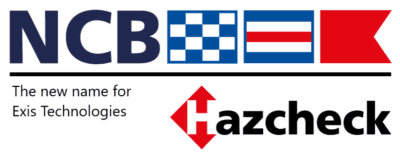IMDG Code Amendment 39-18 impact on segregation requirements between acids and alkalis
BADGP Newsletter December 2019 issue
With every IMDG Code Amendment update there are raft of changes to help shippers move their dangerous goods as safely as possible. Some of these changes are more notable than others. The latest IMDG Code Amendment, Amendment 39-18, coming into force on January 1st 2020 is no exception.
Here we focus on the changes to the segregation provisions in the Code and if these changes make improvements in the problematic area of shipping Acids and Alkalis together. Before doing so it is worth remembering that even if two items are deemed to be compatible according to the general segregation requirements in 7.2.4, there may be additional substance specific segregation provisions that need to be applied and take precedence. These specific segregation requirements are identified predominantly through the addition of segregation codes ‘SG’ (7.2.8) and assignment to segregation groups (3.1.4.4, 7.2.5).
The first change to consider in this Amendment is with segregation groups. Each of the 18 segregation groups now has an alphanumeric code starting with the letters ‘SGG’. The table below shows these codes and their descriptions. As well as being shown in 3.1.4.4, they are now added to the relevant entries in the DGL and shown in column 16b along with the ‘SG’ segregation codes.
|
Segregation Group
|
Segregation Group Code
|
Description
|
|
1
|
SGG1
|
Acids
|
|
1, entries marked *
|
SGG1a
|
Strong acids*
|
|
2
|
SGG2
|
Ammonium compounds
|
|
3
|
SGG3
|
Bromates
|
|
4
|
SGG4
|
Chlorates
|
|
5
|
SGG5
|
Chlorites
|
|
6
|
SGG6
|
Cyanides
|
|
7
|
SGG7
|
Heavy metals and their salts (including their organometallic compounds)
|
|
8
|
SGG8
|
Hypochlorites
|
|
9
|
SGG9
|
Lead and its compounds
|
|
10
|
SGG10
|
Liquid halogenated hydrocarbons
|
|
11
|
SGG11
|
Mercury and mercury compounds
|
|
12
|
SGG12
|
Nitrites and their mixtures
|
|
13
|
SGG13
|
Perchlorates
|
|
14
|
SGG14
|
Permanganates
|
|
15
|
SGG15
|
Powdered metals
|
|
16
|
SGG16
|
Peroxides
|
|
17
|
SGG17
|
Azides
|
|
18
|
SGG18
|
Alkalis
|
* the use of this asterisk identifies if something is a strong acid in the list of acids included in 3.1.4.4. UN 1439 is the only entry in the DGL requiring separation from strong acids but not weak ones.
As an example, see the entry for UN 1828 below. Here we can see that this substance belongs to the ‘Acid’ segregation group since SGG1 is shown in column 16b.

The second change is that many more entries in the DGL have now been assigned SG35 (stow separated from SGG1 – acids), SG36 (stow separated from SGG18 – alkalis) and/or SG49 (stow separated from SGG6 – cyanides) to correct inconsistencies with the way they have been applied to some substances and not others.
So, how does this affect the segregation of Acids and Alkalis?
Well first it is much easier to identify a substance or article as belonging to a certain segregation group. If a shipper sees that the substance they are shipping has SGG1 in column 16b they can immediately recognise that this substance belongs to the ‘Acid’ segregation group. If any of the dangerous goods items they are co-loading with require segregating from Acids this will immediately highlight this segregation requirement ensuring the correct segregation between the items can be applied.
Secondly, with the addition of SG35 or SG36 to many more items in the DGL, segregation between conflicting Acids and Alkalis is now much more encompassing. Previously, every substance listed in 3.1.4.4 as an Alkali was given code SG35 separated from Acids. Now at amendment 39-18, all Acids have also been given SG36, separated from Alkalis.
However, it should be noted that nowhere in the IMDG Code does it say that all Acids should be segregated from all Alkalis. Only if there is a segregation code to that effect and if the other substance or article belongs to that segregation group should the segregation be applied (assuming the relaxation from any conflict due to a clash between acids and alkalis when shipping acids and alkalis together if they are class 8 packing group II or III in packages not exceeding 30kg or 30L and which do not react dangerously with each other does not apply – see IMDG 7.2.6.5).
Problems occur though, when adding an Acid or Alkali segregation group to N.O.S. entries as required in 5.4.1.5.11.1. This is best explained if we look at a couple of examples.
If we take a mixed load of UN 2260 which has SG35, “separated from” SGG1 – Acids, and UN1760, pg III which has been set as belonging to the Acid segregation group (and assuming neither load qualifies from the relaxations in 7.2.6.5) then these two items have a “separated from” requirement and cannot be loaded in the same container.
However, if we have two substances, both classified as UN 1760 but one set to belong to the Acid segregation group; the other, set to belong to the Alkali segregation group then these two items will not require segregation under the current IMDG Code provisions.
It is worth bearing in mind that despite this ambiguity some Lines still require that ALL Acids and Alkalis are segregated regardless of this not always being the case under the IMDG Code provisions.
In summary, things have improved in this latest Amendment to ensure clarity and consistency of the segregation requirements between Acids and Alkalis. Beware though, just because a PSN may include the word ‘Acid’ this does not automatically mean that it must be segregated from a substance which is identified as an ‘Alkali’. Likewise, adding an Acid or Alkali segregation group to a substance or article may not trigger a segregation requirement is some instances. Always check the segregation codes and segregation group codes and be aware of the relaxations in 7.2.6.5. If in doubt, always check with your local competent authority and or shipping line representative.
* Note, 2019 has been a transition year where either the current Amendment in force, Amendment 38-16 or the new Amendment 39-18 can be used. See Amendment Cycle for further details.
Will Bartle
Compliance and Regulations Manager
Exis Technologies







